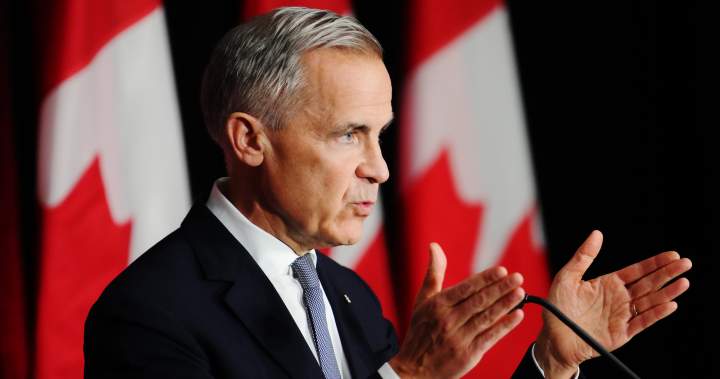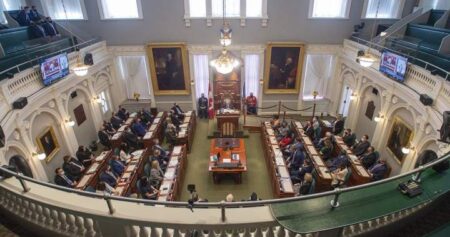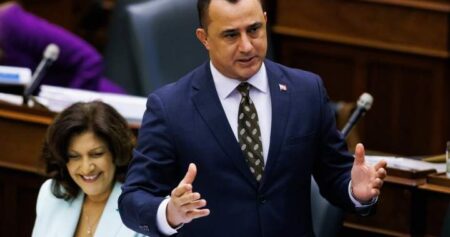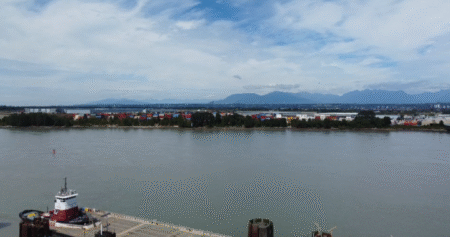Canada’s new immigration plan will be in focus as the federal government prepares to table its budget next week, with Prime Minister Mark Carney saying a new plan will be part of that.
Speaking to students at the University of Ottawa last week, Carney said “this budget will include Canada’s new immigration plan to do better for newcomers and for everyone.”
Each year, the government announces the number of permanent residents it plans to bring in over the next few years. Last year, the government also started setting targets for temporary immigration.
“This government is getting immigration under control, with asylum claims down by a third, and even temporary foreign workers down by more than 70 per cent this year,” Carney said.
“To match immigration levels with our needs and our capacity to welcome them, this budget will include Canada’s new immigration plan to do better for newcomers and for everyone,” Carney said.
So where do things stand right now ahead of Carney’s immigration plan update?
When it comes to international students, one of the categories of immigration that has faced intense scrutiny in recent years, the federal government had set a target of issuing 437,000 study permits in 2025.
As of August, 244,380 study permits have been issued, an Immigration, Refugees and Citizenship Canada (IRCC) spokesperson told Global News.
According to IRCC data, 132,505 fewer new students arrived in Canada between January and August 2025 compared to the same period in 2024.
For the first time, Canada also set target levels for temporary residents, with the aim of reducing temporary resident volumes to less than five per cent of the general population.
Canada plans to welcome 445,901 temporary residents by 2025, which will be reduced to 445,662 in 2026.
The Canadian government also issued 154,515 work permits between January and August, 146,395 fewer visas than the same period last year.

Get breaking National news
For news impacting Canada and around the world, sign up for breaking news alerts delivered directly to you when they happen.
Of the new visas issued in 2025, only a small portion (43,315) were Temporary Foreign Worker permits while the rest (111,200) were under the International Mobility Program.
According to the 2025–2027 Immigration Levels Plan, the latest one put out by the federal government, Canada will reduce the number of expected new permanent residents from the previous target of 500,000 to 395,000 in 2025.
The federal government said this number is expected to fall further to 380,000 by 2026 and 365,000 by 2027.
As of August, Canada has welcomed 276,870 new permanent residents. While setting the levels plan last year, the government said 40 per cent of all new permanent residents would come from temporary residents who are already in Canada.
These cuts to immigration came after years of increased immigration.
Following the labour shortages seen in the aftermath of the COVID-19 pandemic, the federal government had laid out a plan to steadily increase immigration levels.
In February 2022, the federal government set a target of admitting 431,645 permanent residents in 2022, 447,055 in 2023 and 451,000 in 2024. Later in the year, the target was revised.
The government said in November 2022 that it planned to admit 465,000 new permanent residents in 2023, 485,000 in 2024 and half a million (500,000) in 2025.
Public sentiment began to shift, however, as the cost of living soared.
In 2023, a survey from Environics Institute said 44 per cent of Canadians agree with the statement that “overall, there’s too much immigration to Canada” compared with 51 per cent who disagree.
This view of immigration was a significant shift from the results just a year before, where the same question had a record high of 69 per cent of people disagreeing with the statement and only 27 per cent saying there’s too much immigration.
While the government did not cut immigration targets in 2023, they decided to hold them steady. Canada announced it would not cut immigration levels and plans to hold its target of annual newcomers steady at 500,00 people starting in 2026.
In January last year though, the federal government announced a national cap on the intake of international students into the country.
Former immigration minister Mark Miller said the cap would reduce the intake by 35 per cent over the next two years. He said the measures were temporary and were going to stay in place for two years.
In November last year, Ottawa began to reverse course on immigration.
“We didn’t get the balance quite right,” former prime minister Justin Trudeau told reporters while announcing cuts to the federal government’s targets.
Campaigning as Liberal leader in the 2025 federal election, Carney said he would keep the caps on immigration.
“The new caps that have been put in place on much lower levels of immigration, including temporary foreign workers, including foreign students and those caps or something similar to those levels, in my judgment, need to remain in place until we’ve expanded housing,” he said.
Carney added there’s not a “predetermined point” at which those caps would be adjusted or removed.
The slowing population growth is easing the pressure on Canada’s housing market, a new report by TD Bank said on Tuesday.
The report said it helped moderate demand for purpose-built rentals and stemmed the spike in rents across the country.
Canada’s current unemployment rate would likely be at least one per cent higher if immigration growth had continued unabated, the report added.
“Beyond the purpose-built rental space, lowering the cap on newcomers has also lowered condo demand for both homeownership and the secondary rental market,” the report said.
However, a CIBC report released Monday said the high levels of student population growth Canada saw was “neither a curse, nor a blessing,” arguing that Canada’s economic woes started before the surge of international students.
“Immigration did not crash our economy, with challenges to growth and investment spending more tied to a post-pandemic hangover, monetary policy tightening and low commodity prices,” the report said.
“In fact, the increased supply of workers and the extra spending from newcomers added about 1% to the level of GDP by the end of 2024, a welcome buffer during what was a challenging period,” it added.
Read the full article here

















